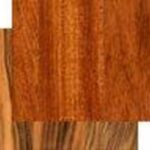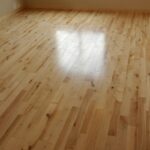If your house happens to be like our house and is full of antique furniture then knowing how to refinish wood furniture yourself would be an asset. Refinishing wood furniture is similar to refinishing any piece of wood. The process is nearly the same whether the wood object is flooring, fencing, furniture, doors, and so on. Knowing the basics on how to refinish a wood product gives you the opportunity to try your skills on all kinds of objects both inside and outside of your home.
For your first furniture refinishing project, I will recommend that you start with some piece of furniture that is perhaps in your basement or attic and is now longer in use because it simply looks too weathered, old, or just in an overall poor condition. By starting with a piece of furniture that is considered useless or junk, you will have nothing to lose if you are not happy with the results of your refinished product. Furthermore, you will have time to hone your skills on something that you do not consider to be an heirloom or of great value.
The first step in refinishing wood furniture is to access its overall condition. Look to make sure that the wood is structurally sound. Make sure that the wood is not cracked, that the joints are still together, and all fastening hardware is secure. If the wood furniture is cracked severely, it may not be able to be fixed. If the joints are loose, I suggest that you disable the piece of furniture, apply wood glue to the joints and clamps your furniture together overnight. If the fastening hardware is loose, simply tighten any bolts or screws, but avoid over tightening.
Now that we have accessed the structural condition of the wood furniture, we will turn our attention to the finish applied to the wood furniture. If it has been painted and you would like to remove the paint to reveal the wood beneath, you will need to purchase a chemical paint stripper and use it according to the directions. Or you could sand the furniture to remove all paint. This is time consuming, but avoids the chemical strippers that many people are not fond of using.
If the wood furniture has a clear finish or stain applied to it, we will need to remove all of the finish and get down to the bare wood. The easiest method for doing this will be by sanding the entire surface. I recommend using an orbital sander with coarse sandpaper for large areas and hand sanding for small or tight areas. When hand sanding, always sand with the grain of the wood.
When you have removed all of the previous finish you will have to choose what type of finish you would like to apply. There are many options for finishing wood furniture, but let’s start off by accessing the condition of the raw wood surface. If it was previously stained, it may appear blotchy and your only option will likely be to stain it again in a similar or darker color. If the wood appears uniform in color, you will be able to apply a clear finish and maintain a lighter wood appearance if you chose to.
For clear finishes, the easiest to use for a beginner is a product called shellac. Shellac is available at most home improvement stores and should cost less than $10 for a quart. A quart will go a long way so this is truly a bargain. Shellacs popularity has died off recently with the introduction of polyurethane, but it is far easier to use and much less expensive. Not to mention, shellac delivers better clarity of the wood and brings out the character of the wood better than any polyurethane can. You can choose from blonde or light colored shellac or amber or dark colored shellac. You will also need to purchase a high quality natural bristle brush for applying the shellac.
Once you have purchased your supplies, you will be ready to apply the new finish to your wood furniture. Begin by pouring a small amount of shellac into a small bowl. Then dip the brush in the shellac and shake off the excess. In one continuous motion, apply the shellac from one end of the wood furniture to the other. Do this repeatedly until the piece of wood furniture is covered with shellac. You must work quickly as the shellac dries very quickly. For any detailed areas, you may dip a lint free cloth into the shellac and lightly rub it onto the wood furniture. When you have completely covered your piece of wood furniture with shellac, give it about 10 minutes to dry and repeat the application method listed above. Apply at least three coats following the above method, avoid drips and puddles as you work and in no time your wood furniture will looks new again. Allow overnight to dry after the final coat and your newly finished wood furniture will be ready for use once again.
I hope that by following the above steps, you will be able to bring new life to old, antique wood furniture that has been collecting dust for years. After this first trial piece, you will quickly learn how easy it is to fix up those other wood furniture pieces that may be sitting around your house. So look around and find something else that could deserve a second chance.



